The A. Lange & Söhne Datograph Handwerkskunst Limited Edition
The third model to celebrate the Datograph's 25th anniversary is a stunning hand-decorated Handwerkskunst version, with Roman numerals and no power reserve.
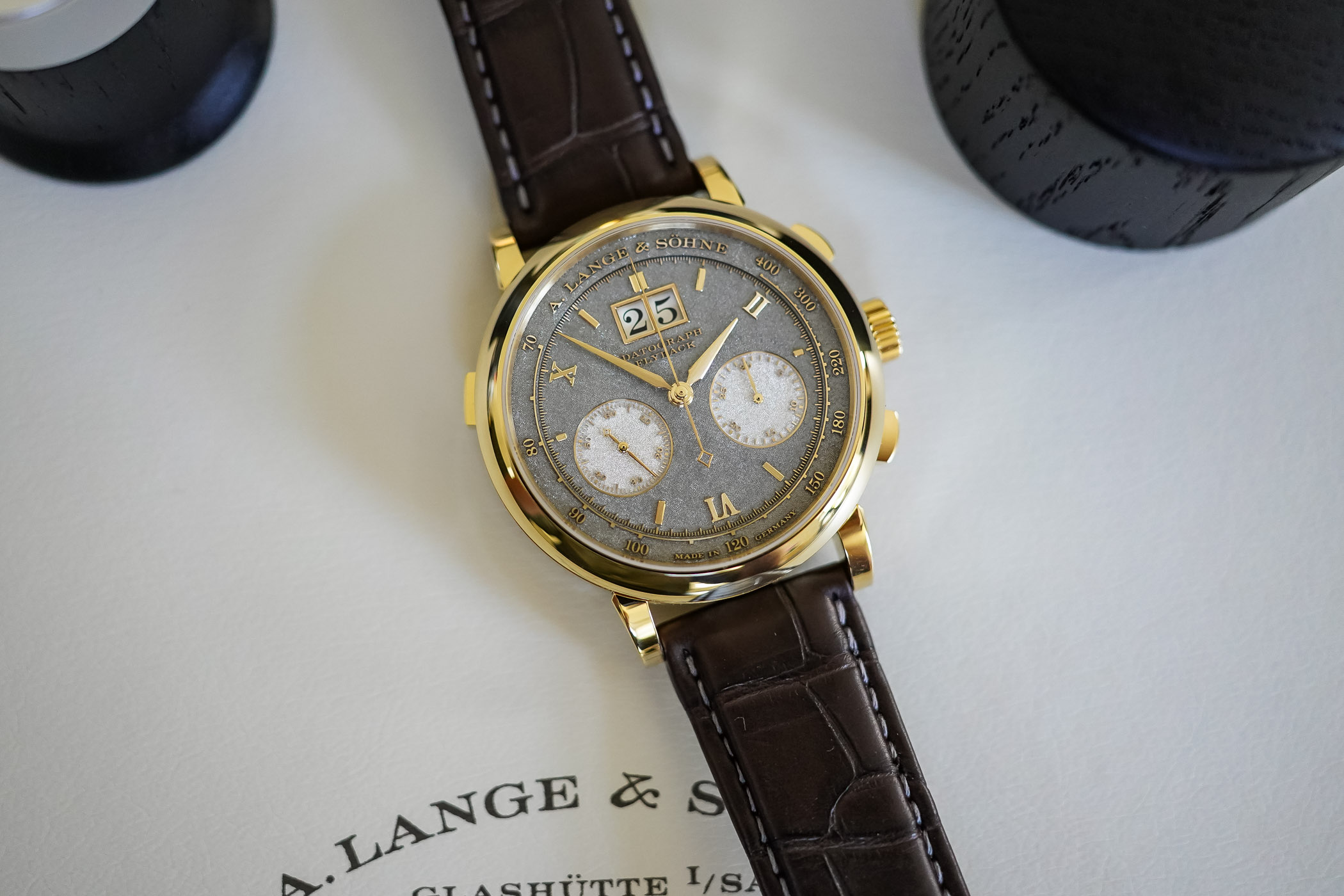
Handwerkskunst… If you know one thing or two about A. Lange & Söhne, you’ll understand that this slightly complex word for anyone not German is actually sweet to hear – to make it simple, it does translate by craftsmanship. What it means is rare watches, but mostly finishings and decorations of the highest rank. For the first time in the brand’s history, the name Handwerkskunst is now applied to the all-important A. Lange & Söhne Datograph. And this shouldn’t come as a surprise, as this emblematic and historically important chronograph celebrates its 25th anniversary this year. Let’s discover what this Datograph Handwerkskunst Limited Edition is all about – spoiler: there are small details that will surely please long-term collectors.
Earlier this year, during Watches & Wonders Geneva, German watchmaker A. Lange & Söhne celebrated the 25th anniversary of its emblematic chronograph, the Datograph, with the launch of the Datograph Perpetual Tourbillon Honeygold Lumen and the White Gold/Blue dial Datograph Up/Down. Besides being now a quarter of a century old, the Datograph should be seen as one of the most important chronographs of modern times, as well as one of the most important watches of the last 30 years. Why…? The answer is long but to summarize things, it was one of the first in-house-built chronograph movements post-quartz crisis and a calibre of such execution that it became a benchmark for the high-end side of the industry. The 1999 Datograph is an icon, an example to be followed, a watch that will mark history. Period. And if you want to know everything about the Datograph’s first 25 years, you certainly can’t miss this in-depth article by Denis here.
Now, there’s the other word in this model’s name; Handwerkskunst. Used by A. Lange & Söhne since 2011, it represents the finest watchmaking and decorative side of the brand, to identify special limited-edition watches whose dials and movements are endowed with rare finissage and engraving techniques. This was used on several rare occasions:
- 2011 Richard Lange Tourbillon “Pour le Mérite” Handwerkskunst in honey gold
- 2012 Zeitwerk Handwerkskunst with a black rhodiumed tremblage dial
- 2013 Lange 1 Tourbillon Perpetual Calendar Handwerkskunst with relief and tremblage engraving
- 2014 Lange 1 Tourbillon Handwerkskunst 20th anniversary with black enamel dial
- 2015 Tourbillon 1815 Handwerkskunst with Tremblage dial
- 2017 Rattrapante 1815 Perpetual Calendar Handwerkskunst
- 2021 Cabaret Tourbillon Handwerkskunst
Never before the Handwerkskunst has been applied to a Datograph. The celebration of its 25th anniversary was thus the perfect moment to bring what’s the most hand-decorated version of this flyback chronograph to date. And before you ask, this new Datograph Handwerkskunst isn’t just a new set of decoration techniques applied to a classic Datograph Up/Down. There are some strong technical similarities, of course, but also several visual and mechanical differences that bring uniqueness to this exclusive, rare and absolutely stunning version.
Looking at this Datograph Handwerkskunst, you can clearly see a connection with the 1815 Tourbillon Handwerkskunst – which happens to be one of my all-time favourite Lange watches… But let’s first break down the specs and what’s familiar. The Datograph HWK (easier, right) shares the same case as a modern Up/Down model, meaning a 41mm diameter and a thickness of 13.1mm – not the smaller 39mm of the first generation Datograph. It is here presented in yellow gold, with the traditional combination of polished bezel and caseback, framing a brushed central part. The pushers, crown and lugs are again classic Dato. The watch is worn on a dark brown, hand-stitched alligator leather strap with grey stitching, closed by a deployant buckle in yellow gold.
It’s when you move to the dial that you’ll see the Handwerkskunst touch. In a rather explicit way, to be fair. And yes, it’s is a feast for the connoisseur’s eyes. The base of the dial is solid gold, which has been first engraved to reveal all the logos, tracks, minutes/seconds graduations and tachymeter scale in positive relief – all left untreated with a gold top surface. Then enters the touch of the human hand, as the entire surface is ornated with a hand-applied tremblage technique – the engraver uses a specially crafted lining burin to create a fine-grained surface, with the main challenge being to achieve a uniform texture on the smallest of planes but to simultaneously preserve all the raised tracks and logos.
The main dial is then black rhodium-coated, while the subsidiary counters (small seconds and 30-minute, moved downwards slightly as always and recessed) are rhodium-coated, yet with the same tremblage surface. The use of relief engraving for the tracks and logos, as well as their gold colour, provides superior contrast despite the intensity of the textures, with clearly visible sculpted contours. The same applies to the aperture for the outsize date, which is framed by a gold-toned element. The main hands, made of solid gold, showcase meticulous circumferential chamfers and straight graining too.
Come closer in inspecting the dial and you’ll notice two highly important details… Besides being particularly well executed, with hand-applied chamfers and straight-grained surfaces, the hour markers of this Datograph Handwerkskunst are rather special. Indeed, A. Lange & Söhne brings back here Roman numerals to the Datograph. And in the same vein, the power reserve indication that was the hallmark of the Up/Down version released in 2012 (second generation Datograph) is gone. These two details echo the look of the original 1999 first-generation Datograph, which I’m sure will please some of the brand’s most loyal collectors.
What’s not echoing the first-gen Datograph is the movement, as this Handwerkskunst Limited Edition still relies on the more powerful calibre L951 (in its L951.8 form here, to be precise). One of the finest hand-wound, in-house chronograph movements on the market, it relies on a classic column-wheel and horizontal clutch architecture, with the addition of a flyback function. This movement runs at a surprisingly tranquil pace of 18,000 vibrations/hour but stores a solid 60-hour power reserve (vs. only 36 hours for the 1st-gen Dato). The overall architecture is identical to the classic versions of the Datograph, meaning that it retains this incredible complexity and depth that made us name this movement “a micro-city full of skyscrapers and avenues on the wrist.”
But the Datograph Handwerkskunst is part of a very special collection and the decorative techniques don’t only apply to the dial. The back reveals a classic finishing technique for the collection, with the bridges and plates, of course made of untreated German silver, decorated with a fine granular surface, echoing the tremblage of the dial. In the same vein, the balance cock has its own treatment. Unlike a conventional Lange engraving where the pattern is cut into the material, the Datograph HWK has a positive relief-engraved floral pattern. But perhaps the most striking difference, all the chronograph levers have been finished with a black polished surface, a time-consuming and rare technique on such parts but that brings this movement into a whole new league.
Limited to only 25 pieces, the new A. Lange & Söhne Datograph Handwerkskunst is an impressive watch, with a price that will only be given to potential collectors upon request. For more details, please visit www.alange-soehne.com.

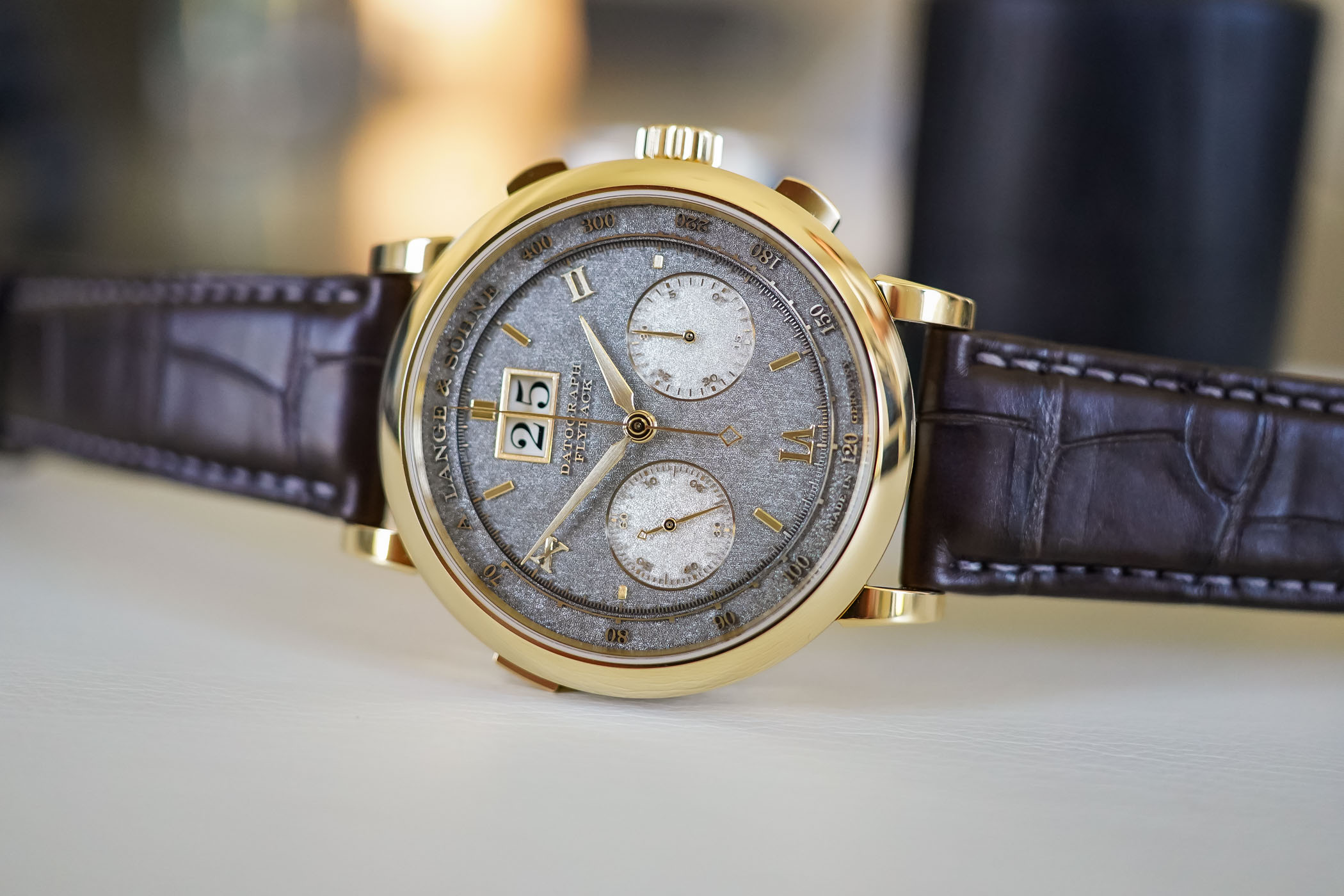
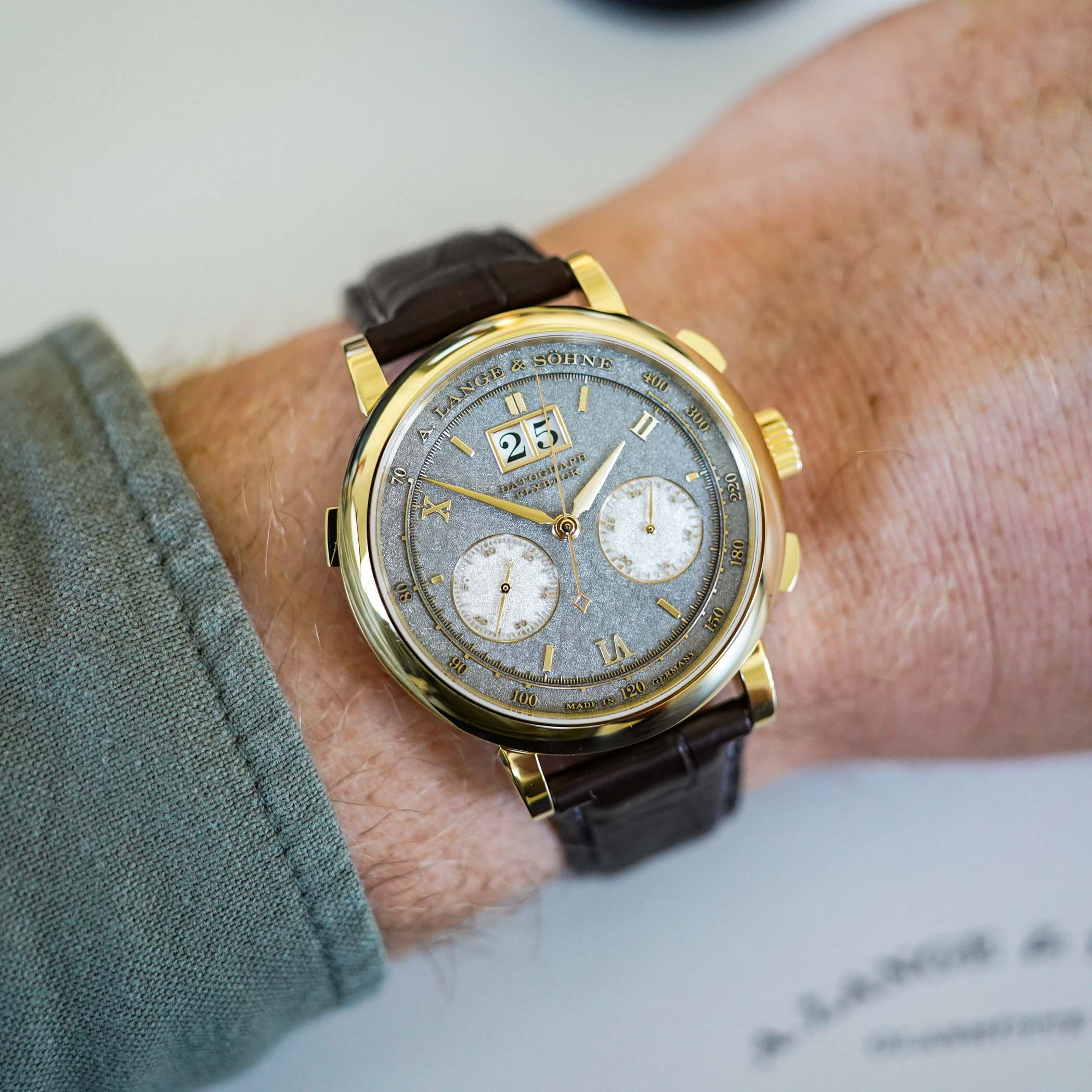
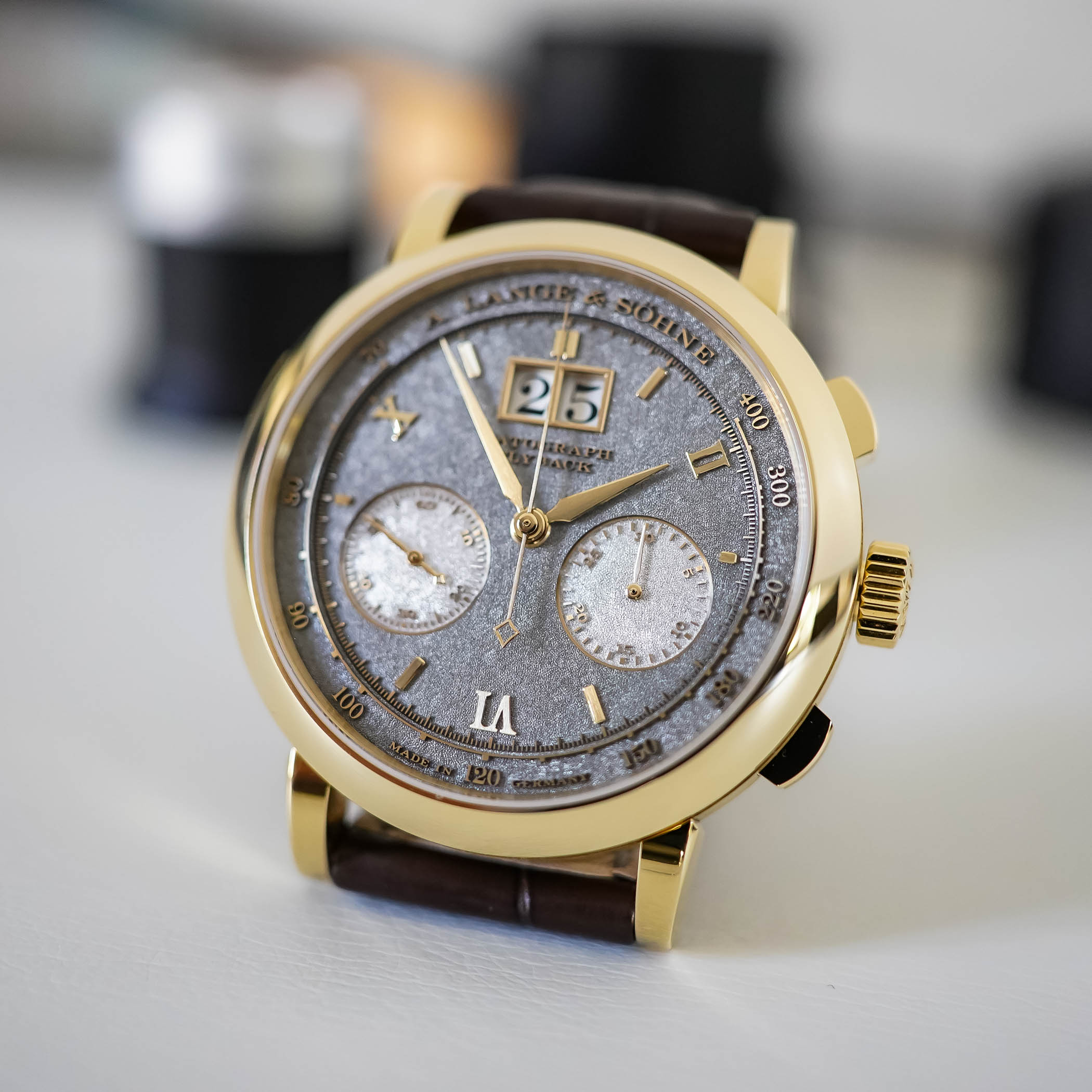
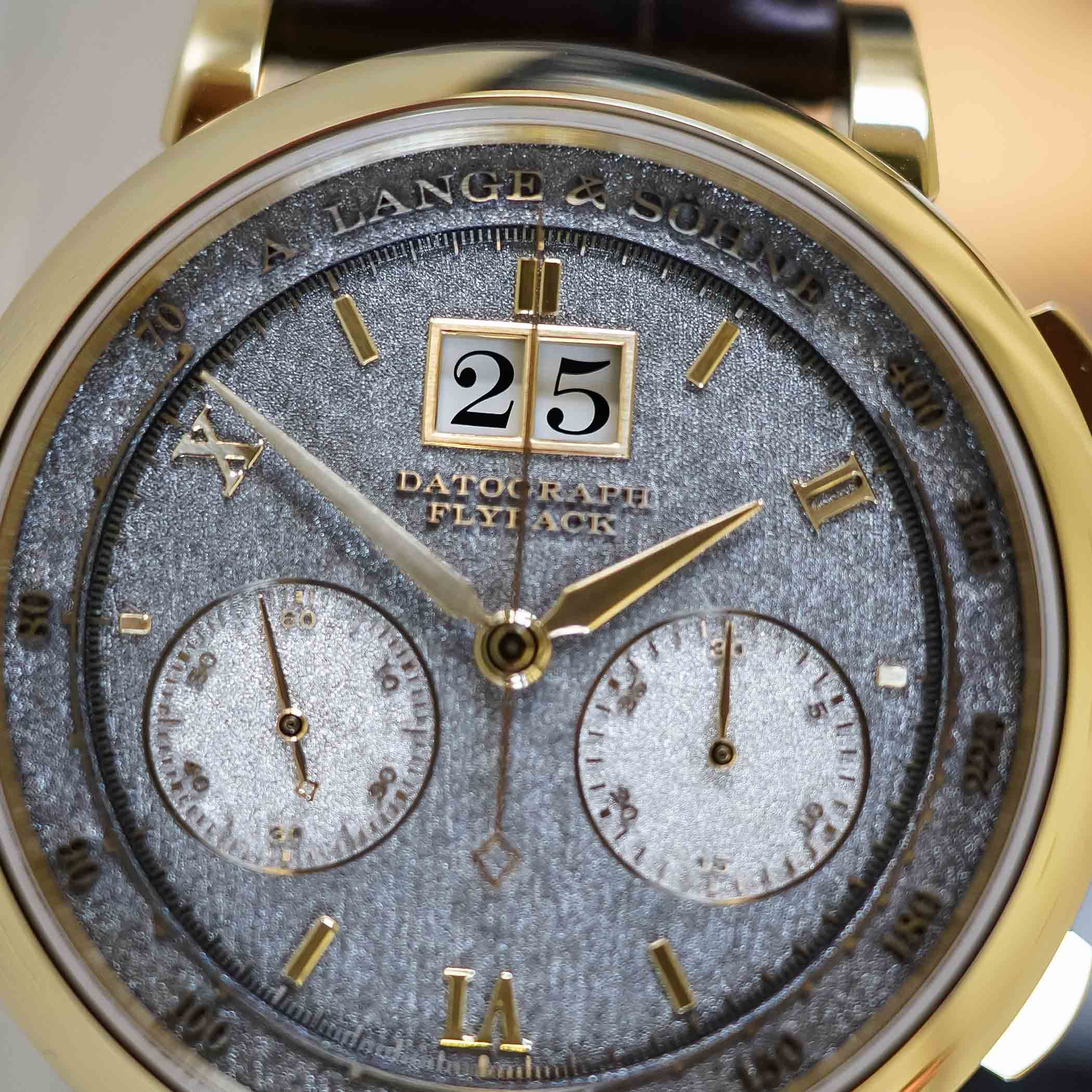
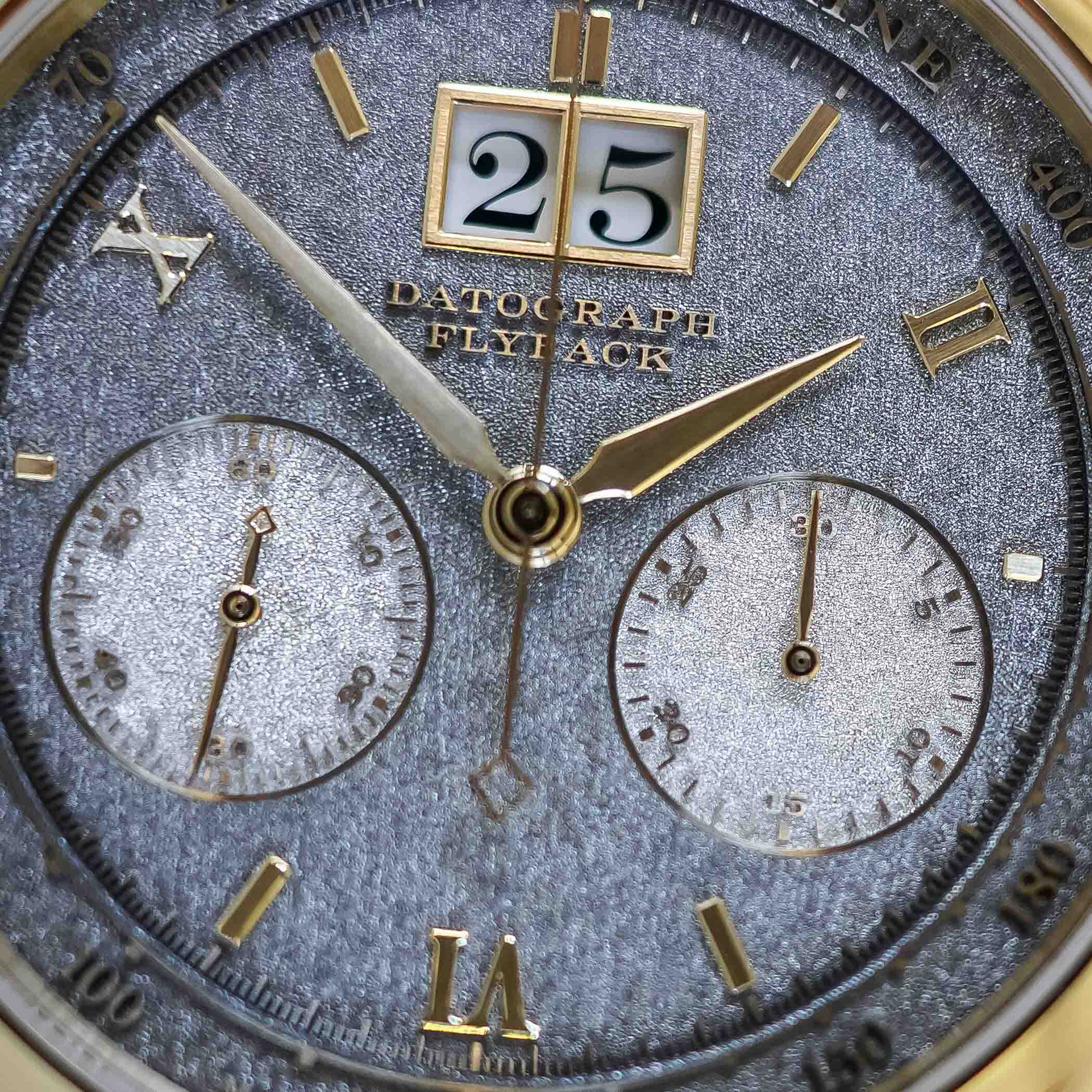
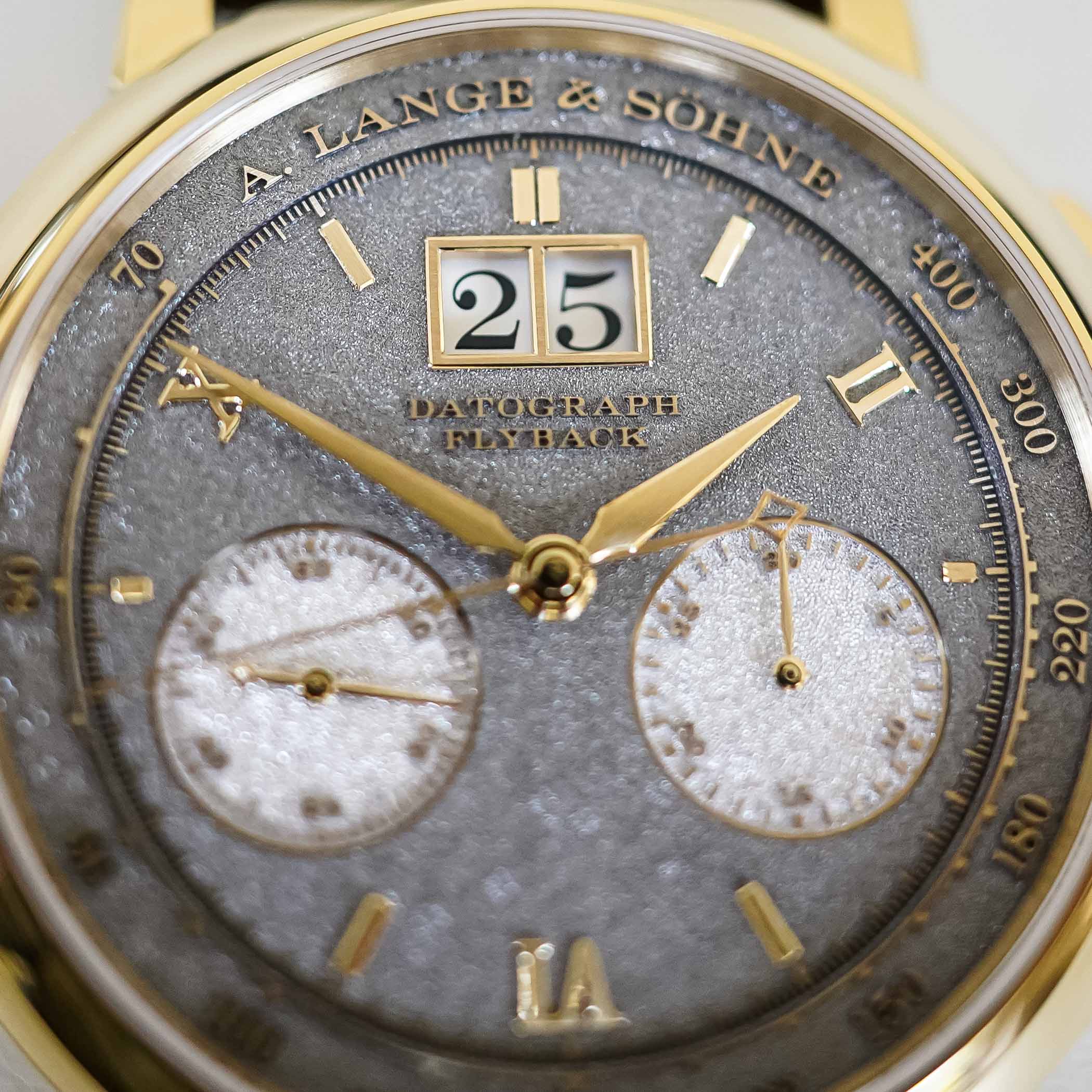
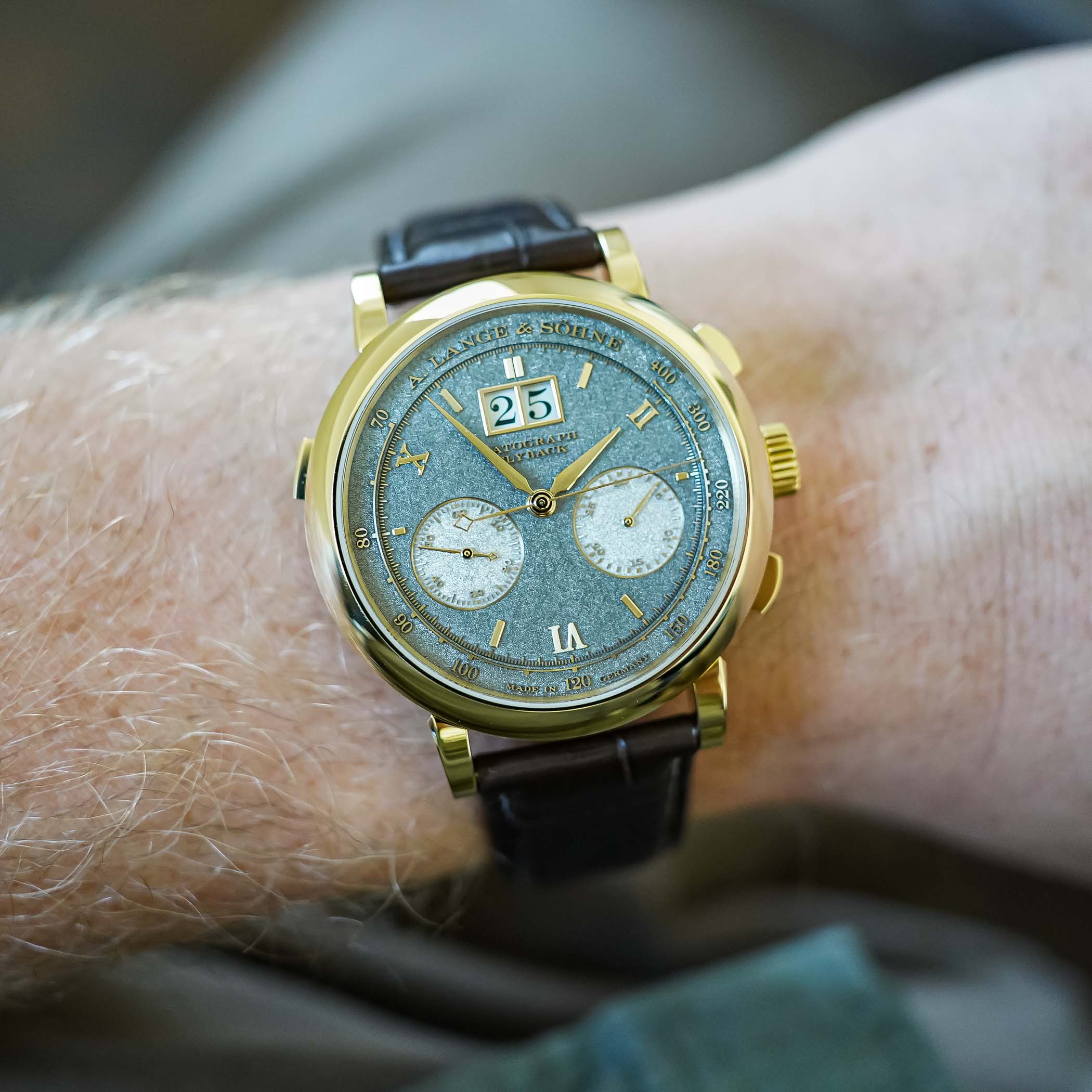
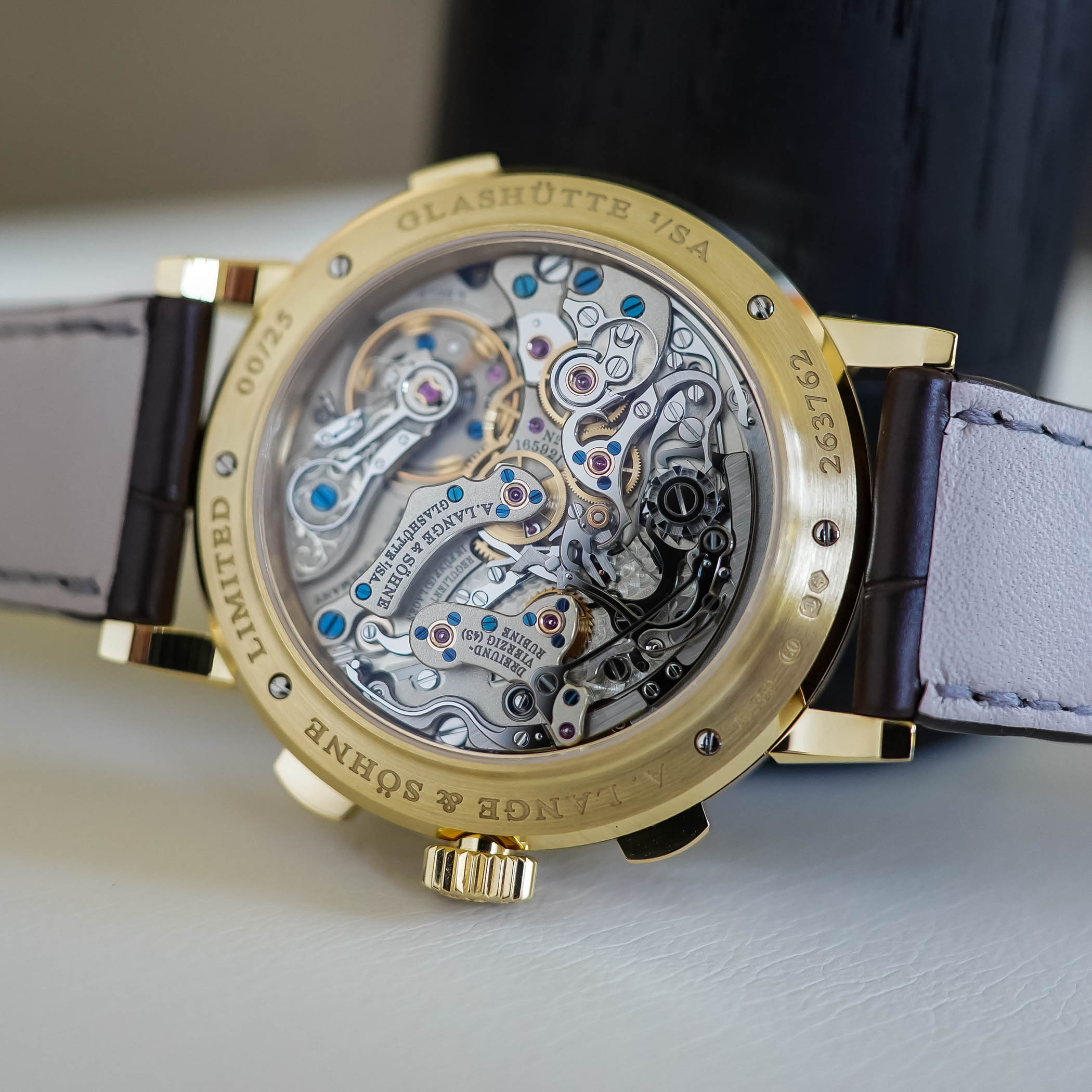
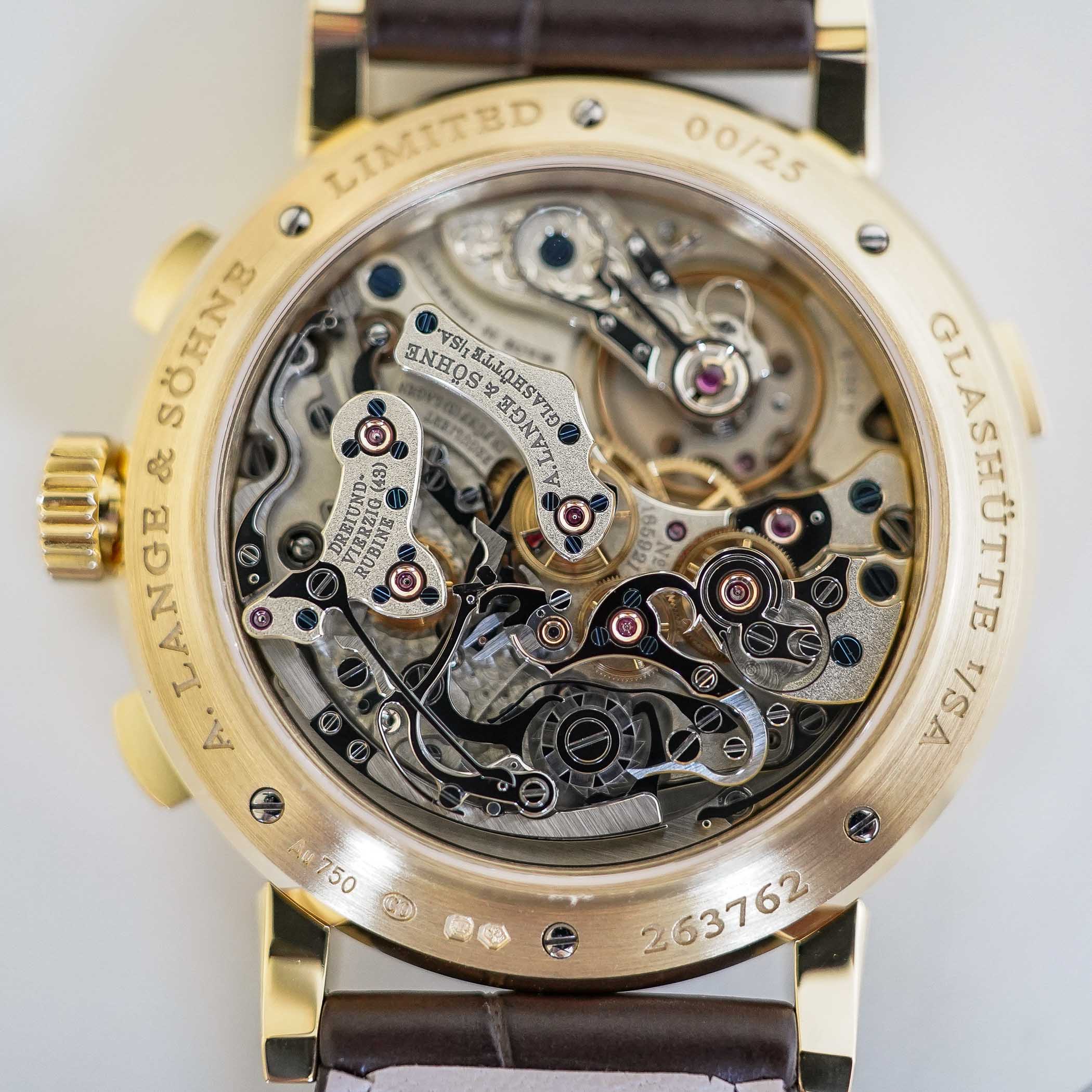
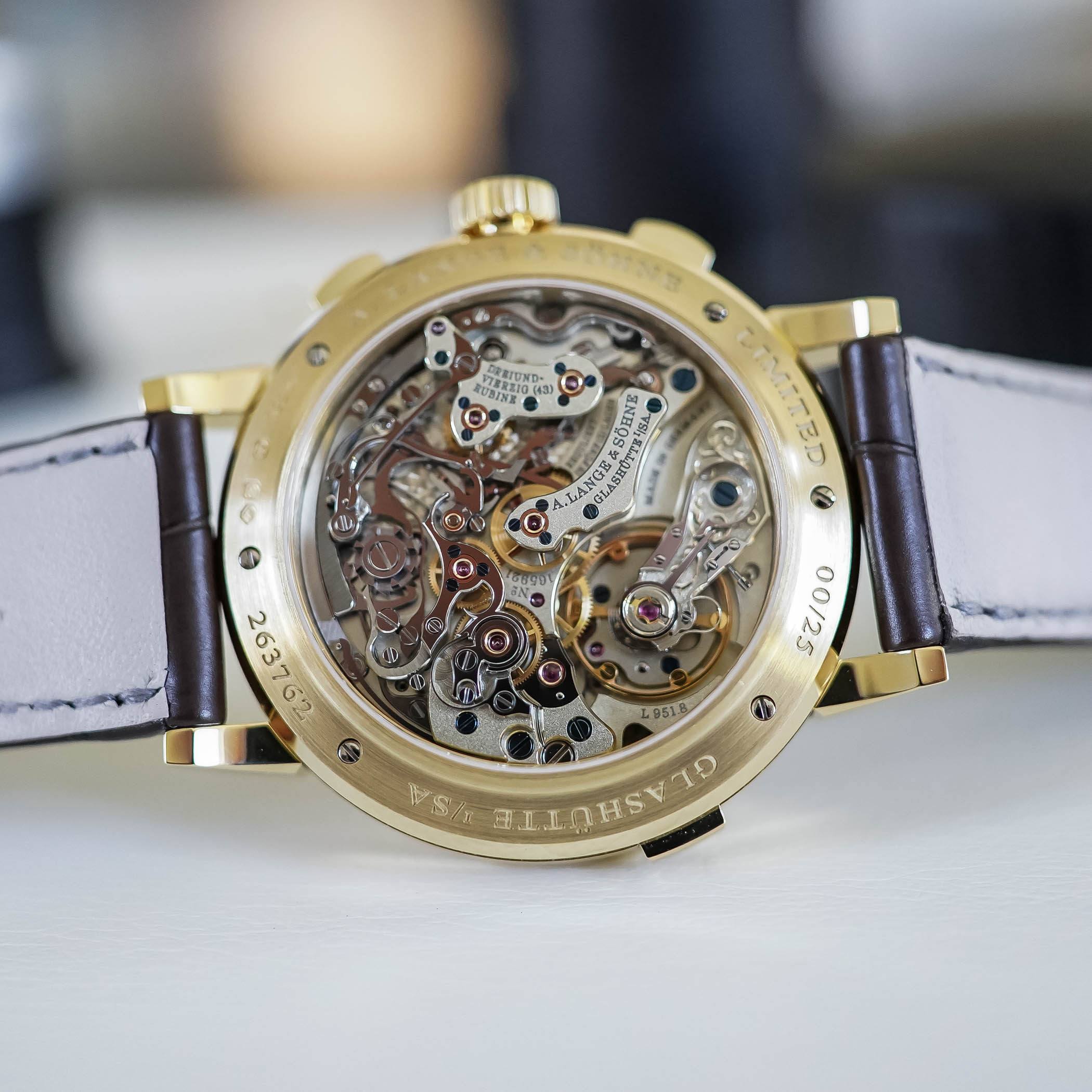
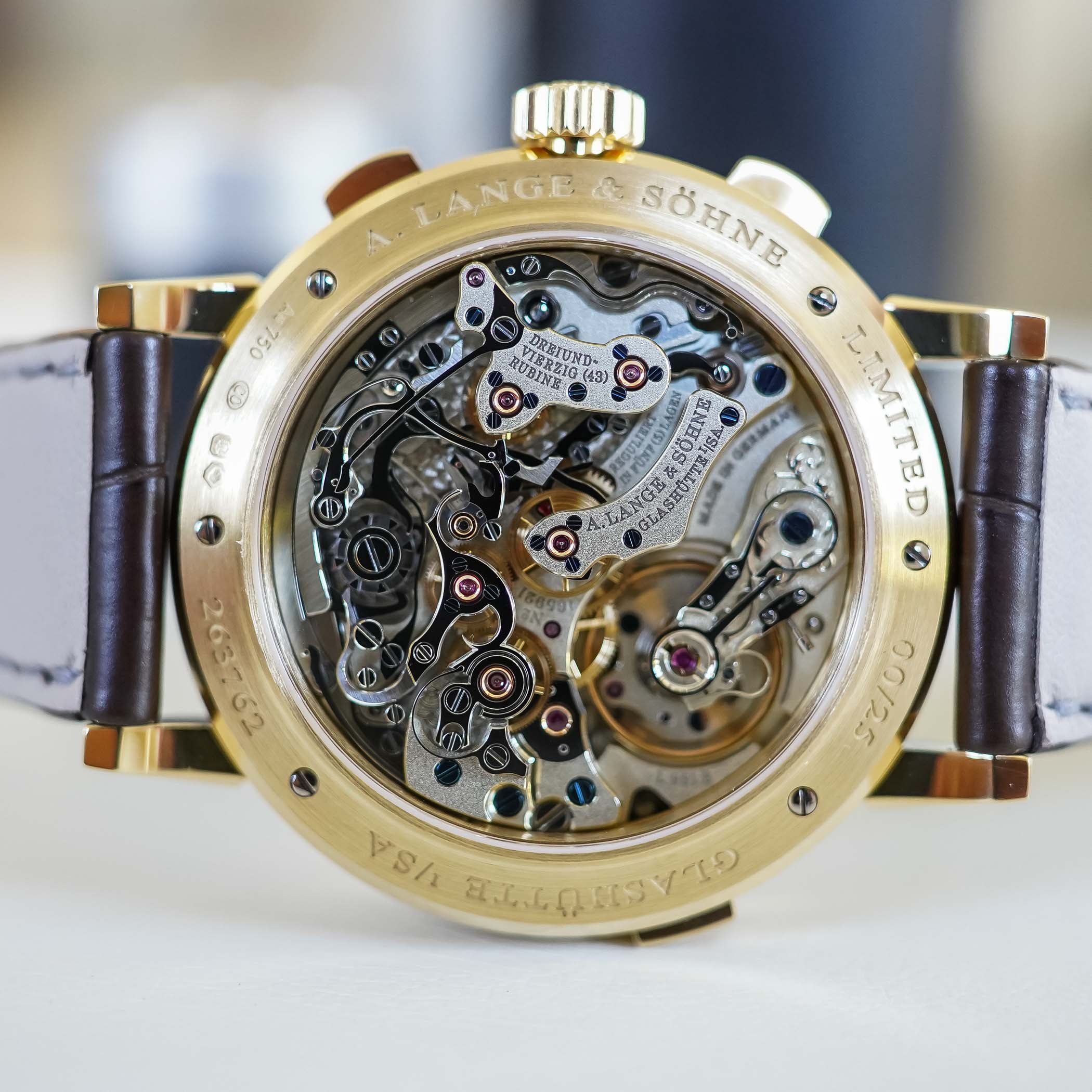



3 responses
I don’t see why one should be referring to other languages as barbaric. It’s quite condescending.
@Alexis – it’s been changed… was not the most inspired piece of humor from my side
What a beauty of a watch. I have a new favorite that I will never be able to afford in a million years. But if money were no object, this would be the one.